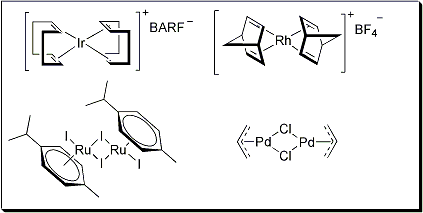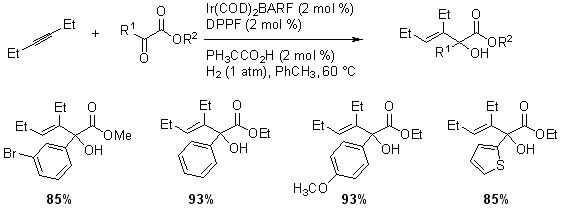Umicore Precatalysts
Precatalysts for Asymmetric and Cross-Coupling Catalysis

Introduction
We are happy to offer a series of precatalysts for asymmetric catalysis and Pd based cross-coupling catalysis. Our partnership with Umicore allows us to offer a portfolio of metal complexes with batch-to-batch consistency for a plethora of catalytic reactions. Twenty different precatalyst complexes are available, providing access to a hundred different catalytic reactions.
Representative Application
Catalytic hydrogenation is a powerful and effective method used for the reduction of organic molecules. Krische and co-workers have developed methods to utilize this catalytic reaction to generate C–C coupling. After extensive studies done using Rhodium as a precatalyst, Krische and co-workers realized the limitations of Rhodium to catalyze C–C bond forming hydrogenation of only conjugated alkynes. To circumvent these limitations, the utilization of another catalyst was necessary. To expand the scope, Ngai et al. investigated the potency of Ir(COD)2BARF for this transformation. These new complexes proved to be very active with nonconjugated, alkyl-substituted alkynes. In a typical reaction, Ir(COD)2BARF, DPPF ligand and triphenylacetic acid are used to catalyze the coupling hydrogenation of 3-hexyne with a variety of α-ketoesters to yield α-hydroxyesters in good yields.

Scheme 1.Iridium catalyzed C–C bond forming hydrogenation (Reference: Ngai, W.-Y. et al. J. Am. Chem. Soc. 2007, 129, 280.)
Product Information
To continue reading please sign in or create an account.
Don't Have An Account?